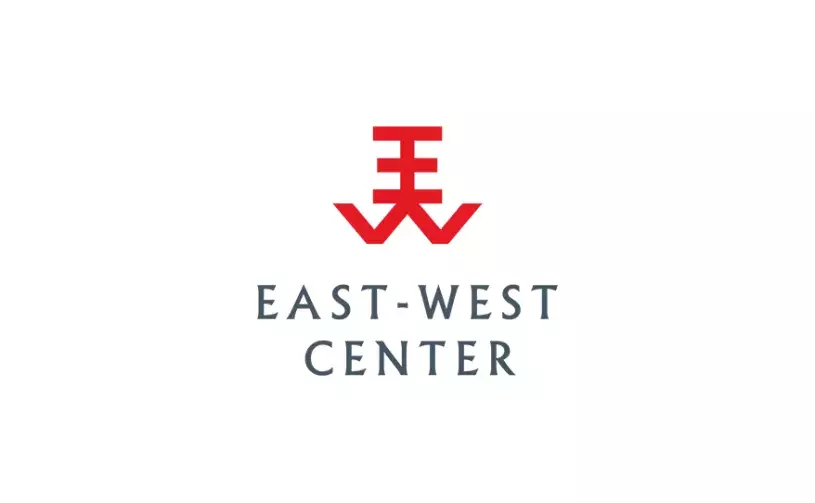Error message

By Tim Brown and Wiwat Peerapatanapokin
HONOLULU (September 17, 2019)—In 2018, roughly 6 million people were living with HIV in Asia and the Pacific, and 310,000 were newly infected, according to UNAIDS estimates. Despite these troubling numbers, financial support for the fight against AIDS is stagnant, and international resources for HIV programs in the region are declining.
Given the continued HIV infection levels and limited funds for halting the epidemic, it is more important than ever for prevention efforts to achieve maximum impact with the resources available. This means that programs need to target the key populations most at risk of contracting HIV. In Asia, these key populations are female sex workers and their clients, people who inject drugs, and men who have sex with men. HIV infection through casual sex among unmarried partners is comparatively rare.
After more than two decades of prevention efforts, there is ample evidence that programs with high coverage of key populations can reduce infection rates. Cambodia, Nepal, and Thailand have successful, high-coverage prevention programs, and these countries have seen declining numbers of current infections and rapid decreases in new infections. In Myanmar and Vietnam, successful programs have stabilized the number of current infections, and the number of new infections is stable or declining. In countries with more limited program coverage, such as Pakistan and the Philippines, both current and new infections are rising quickly.
The importance of key populations in responding to Asian epidemics
The importance of focusing on key populations was recognized as early as 1991. Programs promoting condom use in sex work led to early prevention success stories in Thailand, Cambodia, and the high-prevalence states of India.
Prevention programs aimed at people who inject drugs have focused on reducing the use of nonsterile injecting equipment and expanding opioid-substitution therapies. They have had mixed success. In places where programs have been expanded to reach a large proportion of this population, HIV prevalence has declined, but in other places prevention efforts have been too modest to have a measurable effect.
Men who have sex with men present an abiding challenge to HIV prevention in the region. While programs for female sex workers and people who inject drugs have expanded significantly, coverage of programs for men who have sex with men remains comparatively limited. Because anal sex is particularly effective in transmitting HIV, epidemics among this population spread rapidly. Some sites report that more than one in five men in this group is living with HIV, and the numbers are rising across the region.
Today, countries in Asia with the longest-running HIV epidemics—Thailand and Cambodia—have high proportions of current and new infections among women and men who are not currently in any of the major key populations. This leads some to push for shifting the program emphasis to the population at large while deprioritizing key population programs. Yet improved data collection and careful analysis reveal that almost all of the cases of HIV detected in Asia’s “general populations” can be traced back to higher-risk behaviors that occurred in key populations in the past.
How does this happen? Key populations are not closed. A young man may contract HIV as a sex-work client, an injecting drug user, or through having sex with other men, or a young woman may acquire HIV while engaged in sex work. As they become older, they are likely to marry and/or reduce their risk behavior. Thus, they move from a key population into the general population, but they are still living with HIV. They may not learn that they are HIV-positive until years later when they start to become ill, so while it appears that a member of the general population has become infected, in fact, the infection was acquired when they were previously members of a key population.
Over the years, they may also transmit HIV to their intimate partners. Evidence shows that new infections in the general population are four times more likely to occur among women than among men. This is because the number of men in key populations vastly exceeds the number of women, so married men who now engage or in the past engaged in higher-risk behaviors eventually transmit HIV to their wives much more often than the other way around.
Effective responses address epidemic diversity while keeping the focus on key populations
Improved data collection and epidemiological modelling have revealed an incredible diversity in patterns of new and current infections among population groups in different countries. In five countries of Asia, people who inject drugs account for one-third or more of new infections. In the Philippines, the epidemic is centered almost entirely among men who have sex with men. In several countries with long-running epidemics, significant proportions of new infections are being detected in women who are not themselves members of any key population. Models show that nearly all these women are being infected by their husbands, who are or were key population members.
What are the implications of these findings for HIV prevention and treatment programs in Asia?
- The wide diversity of Asian epidemics requires appropriately tuned responses that address the current situation in a specific country or sub-national setting and anticipate how HIV is likely to spread in the future.
- For maximum impact, prevention and treatment programs must continue to focus firmly on key populations. Focusing on these groups will have the greatest downstream impact on total infections, including those in the general population. A shift to prevention programs aimed at general populations would be a major waste of severely limited prevention resources.
- Existing key-population prevention efforts should be strengthened to more effectively emphasize protection of intimate partners. Innovative programs are needed to encourage married men who formerly visited sex workers or practiced other types of higher-risk behavior to be tested for HIV and, if positive, to begin anti retroviral treatment. Testing should also be offered to their wives, perhaps through assisted partner- notification services.
- The fastest growing component of Asian epidemics is among men who have sex with men, yet prevention programs addressing their needs are the weakest. This group must become a priority for expanded HIV prevention efforts.
Despite local variations, modeling results in every country where the epidemic is being tracked show clearly that the most effective and cost-effective way to fight the AIDS epidemic in Asia is to continue to focus on the key populations who are most at risk and not to dilute the effort with programs aimed at the general population.
###
Tim Brown is a Senior Fellow at the East-West Center. He can be reached at [email protected]. Wiwat Peerapatanapokin is a Non-Resident Senior Fellow at the Center. He can be reached at [email protected].
This issue of the East-West Wire is based on Tim Brown and Wiwat Peerapatanapokin (2019), Evolving HIV epidemics: The urgent need to refocus on populations with risk, Current Opinion in HIV and AIDS. 14(5): 337–53.
Download a pdf version of this Wire article.
The East-West Wire is a news, commentary, and analysis service provided by the East-West Center in Honolulu. All or any part of the Wire content may be used by media with attribution to the East-West Center or the person quoted. To receive Wire articles via email, subscribe here. For links to all East-West Center media programs, fellowships and services, see EastWestCenter.org/Journalists.
The full list of East-West Wires produced by the Research Program is available on the East-West Center website at EastWestCenter.org/Research-Wire. For more on the East-West Center Research Program, see EastWestCenter.org/Research.
The East-West Center promotes better relations and understanding among the people and nations of the United States, Asia, and the Pacific through cooperative study, research, and dialogue.
Series editors:
Derek Ferrar
[email protected]
Sidney B. Westley
[email protected]
The views expressed are those of the authors and do not necessarily reflect the policy or position of the East-West Center or any organization with which the authors are affiliated.
By Tim Brown and Wiwat Peerapatanapokin
HONOLULU (September 17, 2019)—In 2018, roughly 6 million people were living with HIV in Asia and the Pacific, and 310,000 were newly infected, according to UNAIDS estimates. Despite these troubling numbers, financial support for the fight against AIDS is stagnant, and international resources for HIV programs in the region are declining.
Given the continued HIV infection levels and limited funds for halting the epidemic, it is more important than ever for prevention efforts to achieve maximum impact with the resources available. This means that programs need to target the key populations most at risk of contracting HIV. In Asia, these key populations are female sex workers and their clients, people who inject drugs, and men who have sex with men. HIV infection through casual sex among unmarried partners is comparatively rare.
After more than two decades of prevention efforts, there is ample evidence that programs with high coverage of key populations can reduce infection rates. Cambodia, Nepal, and Thailand have successful, high-coverage prevention programs, and these countries have seen declining numbers of current infections and rapid decreases in new infections. In Myanmar and Vietnam, successful programs have stabilized the number of current infections, and the number of new infections is stable or declining. In countries with more limited program coverage, such as Pakistan and the Philippines, both current and new infections are rising quickly.
The importance of key populations in responding to Asian epidemics
The importance of focusing on key populations was recognized as early as 1991. Programs promoting condom use in sex work led to early prevention success stories in Thailand, Cambodia, and the high-prevalence states of India.
Prevention programs aimed at people who inject drugs have focused on reducing the use of nonsterile injecting equipment and expanding opioid-substitution therapies. They have had mixed success. In places where programs have been expanded to reach a large proportion of this population, HIV prevalence has declined, but in other places prevention efforts have been too modest to have a measurable effect.
Men who have sex with men present an abiding challenge to HIV prevention in the region. While programs for female sex workers and people who inject drugs have expanded significantly, coverage of programs for men who have sex with men remains comparatively limited. Because anal sex is particularly effective in transmitting HIV, epidemics among this population spread rapidly. Some sites report that more than one in five men in this group is living with HIV, and the numbers are rising across the region.
Today, countries in Asia with the longest-running HIV epidemics—Thailand and Cambodia—have high proportions of current and new infections among women and men who are not currently in any of the major key populations. This leads some to push for shifting the program emphasis to the population at large while deprioritizing key population programs. Yet improved data collection and careful analysis reveal that almost all of the cases of HIV detected in Asia’s “general populations” can be traced back to higher-risk behaviors that occurred in key populations in the past.
How does this happen? Key populations are not closed. A young man may contract HIV as a sex-work client, an injecting drug user, or through having sex with other men, or a young woman may acquire HIV while engaged in sex work. As they become older, they are likely to marry and/or reduce their risk behavior. Thus, they move from a key population into the general population, but they are still living with HIV. They may not learn that they are HIV-positive until years later when they start to become ill, so while it appears that a member of the general population has become infected, in fact, the infection was acquired when they were previously members of a key population.
Over the years, they may also transmit HIV to their intimate partners. Evidence shows that new infections in the general population are four times more likely to occur among women than among men. This is because the number of men in key populations vastly exceeds the number of women, so married men who now engage or in the past engaged in higher-risk behaviors eventually transmit HIV to their wives much more often than the other way around.
Effective responses address epidemic diversity while keeping the focus on key populations
Improved data collection and epidemiological modelling have revealed an incredible diversity in patterns of new and current infections among population groups in different countries. In five countries of Asia, people who inject drugs account for one-third or more of new infections. In the Philippines, the epidemic is centered almost entirely among men who have sex with men. In several countries with long-running epidemics, significant proportions of new infections are being detected in women who are not themselves members of any key population. Models show that nearly all these women are being infected by their husbands, who are or were key population members.
What are the implications of these findings for HIV prevention and treatment programs in Asia?
- The wide diversity of Asian epidemics requires appropriately tuned responses that address the current situation in a specific country or sub-national setting and anticipate how HIV is likely to spread in the future.
- For maximum impact, prevention and treatment programs must continue to focus firmly on key populations. Focusing on these groups will have the greatest downstream impact on total infections, including those in the general population. A shift to prevention programs aimed at general populations would be a major waste of severely limited prevention resources.
- Existing key-population prevention efforts should be strengthened to more effectively emphasize protection of intimate partners. Innovative programs are needed to encourage married men who formerly visited sex workers or practiced other types of higher-risk behavior to be tested for HIV and, if positive, to begin anti retroviral treatment. Testing should also be offered to their wives, perhaps through assisted partner- notification services.
- The fastest growing component of Asian epidemics is among men who have sex with men, yet prevention programs addressing their needs are the weakest. This group must become a priority for expanded HIV prevention efforts.
Despite local variations, modeling results in every country where the epidemic is being tracked show clearly that the most effective and cost-effective way to fight the AIDS epidemic in Asia is to continue to focus on the key populations who are most at risk and not to dilute the effort with programs aimed at the general population.
###
Tim Brown is a Senior Fellow at the East-West Center. He can be reached at [email protected]. Wiwat Peerapatanapokin is a Non-Resident Senior Fellow at the Center. He can be reached at [email protected].
This issue of the East-West Wire is based on Tim Brown and Wiwat Peerapatanapokin (2019), Evolving HIV epidemics: The urgent need to refocus on populations with risk, Current Opinion in HIV and AIDS. 14(5): 337–53.
Download a pdf version of this Wire article.
The East-West Wire is a news, commentary, and analysis service provided by the East-West Center in Honolulu. All or any part of the Wire content may be used by media with attribution to the East-West Center or the person quoted. To receive Wire articles via email, subscribe here. For links to all East-West Center media programs, fellowships and services, see EastWestCenter.org/Journalists.
The full list of East-West Wires produced by the Research Program is available on the East-West Center website at EastWestCenter.org/Research-Wire. For more on the East-West Center Research Program, see EastWestCenter.org/Research.
The East-West Center promotes better relations and understanding among the people and nations of the United States, Asia, and the Pacific through cooperative study, research, and dialogue.
Series editors:
Derek Ferrar
[email protected]
Sidney B. Westley
[email protected]
The views expressed are those of the authors and do not necessarily reflect the policy or position of the East-West Center or any organization with which the authors are affiliated.
East-West Wire
News, Commentary, and Analysis
The East-West Wire is a news, commentary, and analysis service provided by the East-West Center in Honolulu. Any part or all of the Wire content may be used by media with attribution to the East-West Center or the person quoted. To receive East-West Center Wire media releases via email, subscribe here.
For links to all East-West Center media programs, fellowships and services, see www.eastwestcenter.org/journalists.







